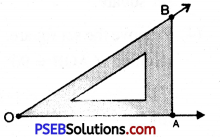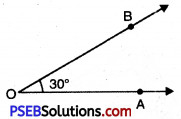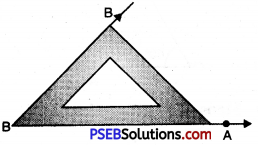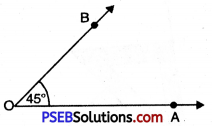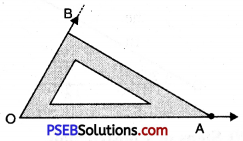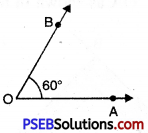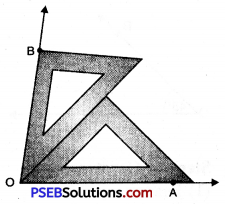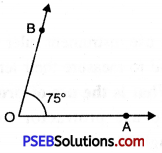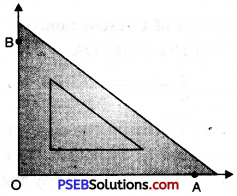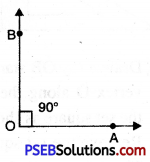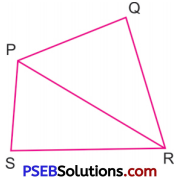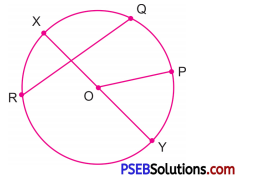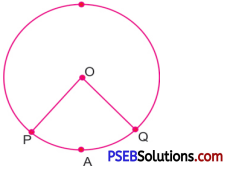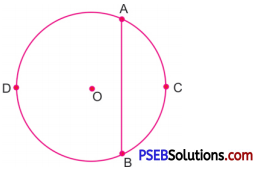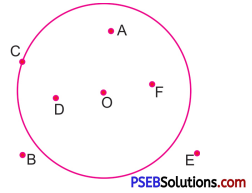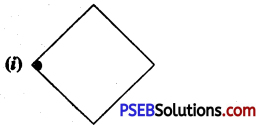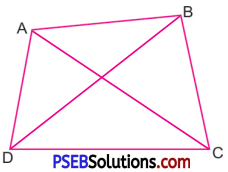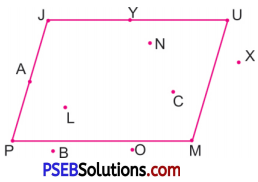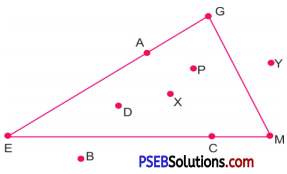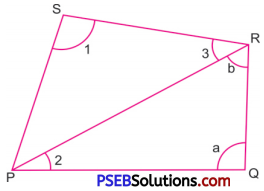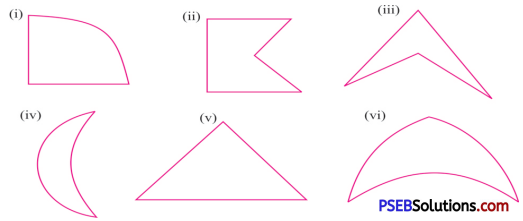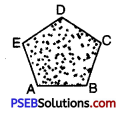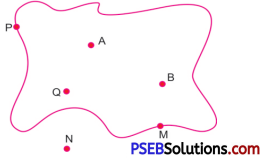Punjab State Board PSEB 6th Class Hindi Book Solutions Hindi Grammar Sangya संज्ञा Exercise Questions and Answers, Notes.
PSEB 6th Class Hindi Grammar संज्ञा
प्रश्न 1.
संज्ञा की परिभाषा उदाहरण सहित लिखो।
अथवा
संज्ञा किसे कहते हैं ? उदाहरण देकर स्पष्ट करो।
उत्तर:
परिभाषा – किसी व्यक्ति, वस्तु, स्थान, प्राणी, भाव के नाम को संज्ञा कहते हैं। जैसे
(1) मेरा नाम ‘हरीश’ है। इनका नाम ‘सतीश’ है। आपका क्या ‘नाम’ है ?
(2) यह ‘हाथी’ है। यह ‘खरगोश’ है। यह ‘मोर’ है।
(3) मैं ‘लुधियाना’ जा रहा हूँ।
(4) ‘नेकी’ कर कुएँ में डाल।
(5) ‘बैठना’ कहाँ है ?
ऊपर के वाक्यों में ‘व्यक्तियों’, ‘पशुओं’, ‘स्थान’, ‘भाव’ और ‘क्रिया व्यापार’ को उनके नामों से बताया गया है। अतः ये नाम ही संज्ञा हैं।
![]()
प्रश्न 2.
संज्ञा की परिभाषा लिखो और उसके भेद बताओ।
अथवा
संज्ञा किसे कहते हैं ? उसके कितने भेद हैं ?
उत्तर:
किसी व्यक्ति, स्थान, वस्तु, जाति, गुण या भाव का बोध कराने वाले शब्द को संज्ञा कहते हैं; जैसे-राम, कृष्ण, दिल्ली, सिंह, पुस्तक, गर्मी, सुन्दरता, दया आदि।
संज्ञा के तीन भेद हैं-
(1) व्यक्तिवाचक
(2) जातिवाचक
(3) भाववाचक।
1. व्यक्तिवाचक : जो शब्द किसी विशेष व्यक्ति, स्थान आदि का बोध कराए, उसे व्यक्तिवाचक संज्ञा कहते हैं; जैसे-कृष्ण, दिल्ली, गंगा आदि।
2. जातिवाचक : जो शब्द किसी सम्पूर्ण जाति का बोध कराए, उसे जातिवाचक संज्ञा कहा जाता है; जैसे-स्त्री, पुरुष, पशु, नगर आदि।
3. भाववाचक : जो शब्द किसी धर्म, अवस्था, भाव, गुण, दोष आदि प्रकट करे, उसे भाववाचक संज्ञा कहते हैं; जैसे-मिठास, मानवता, सत्यता आदि।
बहुवैकल्पिक प्रश्न
प्रश्न 1.
निम्नलिखित में से कौन-सा शब्द संज्ञा’ का उदाहरण है ?
(क) काली
(ख) आनन्द
(ग) यह
(घ) मेहनती।
उत्तर:
(घ) मेहनती
प्रश्न 2.
निम्नलिखित में से संज्ञा शब्द चुनें:
(क) तानसेन
(ख) वह
(ग) बुद्धिमान
(घ) शान्त।
उत्तर:
(क) तानसेन
![]()
प्रश्न 3.
निम्नलिखित में से जातिवाचक संज्ञा छांटिए :
(क) वृक्ष
(ख) रहीम
(ग) पारस
(घ) साहसी।
उत्तर:
(क) वृक्ष
प्रश्न 4.
निम्नलिखित में से कौन सा शब्द ‘जातिवाचक संज्ञा’ का उदाहरण नहीं है ?
(क) क्रोध
(ख) गायक
(ग) साधु
(घ) अध्यापक।
उत्तर:
(क) क्रोध
प्रश्न 5.
निम्नलिखित में से कौन-सा शब्द व्यक्तिवाचक संज्ञा का उदाहरण नहीं है ?
(क) सरिता
(ख) अपसरा
(ग) हमारा
(घ) समरजीत।
उत्तर:
(ग) हमारा
![]()
प्रश्न 6.
निम्नलिखित में से कौन सा शब्द भाववाचक संज्ञा का उदाहरण नहीं है ?
(क) मानवता
(ख) मिठास
(ग) सत्यता
(घ) अच्छा।
उत्तर:
(घ) अच्छा
प्रश्न 7.
निम्नलिखित में से भाववाचक संज्ञा शब्द चुनें
(क) बचपन
(ख) अच्छा
(ग) सच्चा
(घ) वह।
उत्तर:
(क) बचपन।

